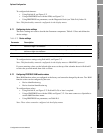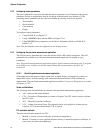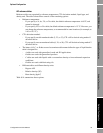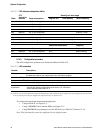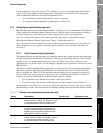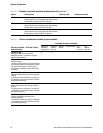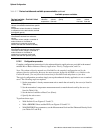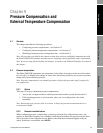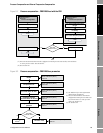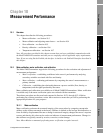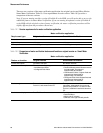
Configuration and Use Manual 81
Measurement Performance DefaultsTroubleshootingCompensation
Chapter 9
Pressure Compensation and
External Temperature Compensation
9.1 Overview
This chapter describes the following procedures:
• Configuring pressure compensation – see Section 9.2
• Configuring external temperature compensation – see Section 9.3
• Obtaining external pressure or temperature data – see Section 9.4
Note: All procedures provided in this chapter assume that you have established communication with
the Model 2400S DP transmitter and that you are complying with all applicable safety requirements.
Note: If you are using Pocket ProLink, the interface is similar to the ProLink II interface described in
this chapter.
9.2 Pressure compensation
The Model 2400S DP transmitter can compensate for the effect of pressure on the sensor flow tubes.
Pressure effect is defined as the change in sensor flow and density sensitivity due to process pressure
change away from calibration pressure.
Note: Pressure compensation is an optional procedure. Perform this procedure only if required by
your application.
9.2.1 Options
There are two ways to implement pressure compensation:
• You can use an output module to obtain pressure data from the system. See Section 9.4.
• If the operating pressure is a known static value, you can configure that value in the
transmitter.
Note: Ensure that your pressure value is accurate, or that your pressure measurement device is
accurate and reliable.
9.2.2 Pressure correction factors
When configuring pressure compensation, you must provide the flow calibration pressure – the
pressure at which the flowmeter was calibrated (which therefore defines the pressure at which there
will be no effect on the calibration factor). Refer to the calibration document shipped with your
sensor. If the data is unavailable, enter
20 PSI.



